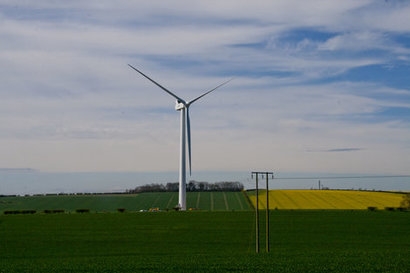
Price cannibalisation has become a specific challenge to the daily management of renewables that needs to be factored into the plans and operations of renewable energy stakeholders now, according to a report by provider of software and advisory services Pexapark, which is pointing to the fact that alongside a surge in prices, the management of capture risk - or cannibalisation risk - has become a centre of attention for renewable investors and operators.
Price cannibalisation is the concept of renewable energy producers generating great volumes of renewable power at a single point in time, reducing the need for expensive gas power and therefore reducing the overall price for that period. This is a result of the marginal pricing approach in the spot markets, which is explained in-depth as part of the report.
Early in the energy transition, renewable energy made up just a fraction of the overall electricity mix. At the same time, the early installed capacity operated with the support of government subsidies, securing a fixed amount of revenue for every MWh produced, at any time of the day.
However, as renewables’ contribution to the energy mix continues to increase, predominantly providing electricity on an intermittent basis, there is a risk that generators will be eating into their own revenues.
Pexapark has looked at Germany, Sweden, and Spain – three developed renewables markets in Europe – where cannibalisation risk is already prevalent.
Data show that in Q4 2021 there was an unprecedented decline in capture factors – the ratio between baseload prices and capture, or realised, prices – in certain pricing zones of Sweden where renewable energy capture prices tumbled to 50 per cent less than the baseload price. Meanwhile, Pexapark estimates that Spain, one of the strongest solar PV countries in the world, could see its capture rates consistently falling below the baseload rates, with cannibalisation potentially reaching up to 30 per cent by 2030.
Pexapark also examined a more locational distribution of cannibalisation effects across Germany’s now-large onshore wind sector. Its calculations reveal a ‘belt of doom’ where capture rates appear to be almost 20 per cent lower than other locations.
Better visibility of capture factors is one of the important aspects in the active management of cannibalisation, according to Pexapark. Historical and forecasted capture rates are a key input factor in PPA analytics thereby helping decision support on PPA structures, energy risk reporting and the quantification and modelling of cannibalisation offsetting strategies like investment in energy storage.
“While the current focus for renewable energy investors and operators is around unprecedented levels of market prices and price volatility, the active management of cannibalisation risk has become equally important as part of comprehensive renewable revenue and risk management” said Luca Pedretti, COO, and co-founder of Pexapark. “Keeping track of realised and expected capture factors has become an essential, no-regret move.”
For additional information:
Full report: The Cannibalization Effect: Behind the Renewables’ Silent Risk

